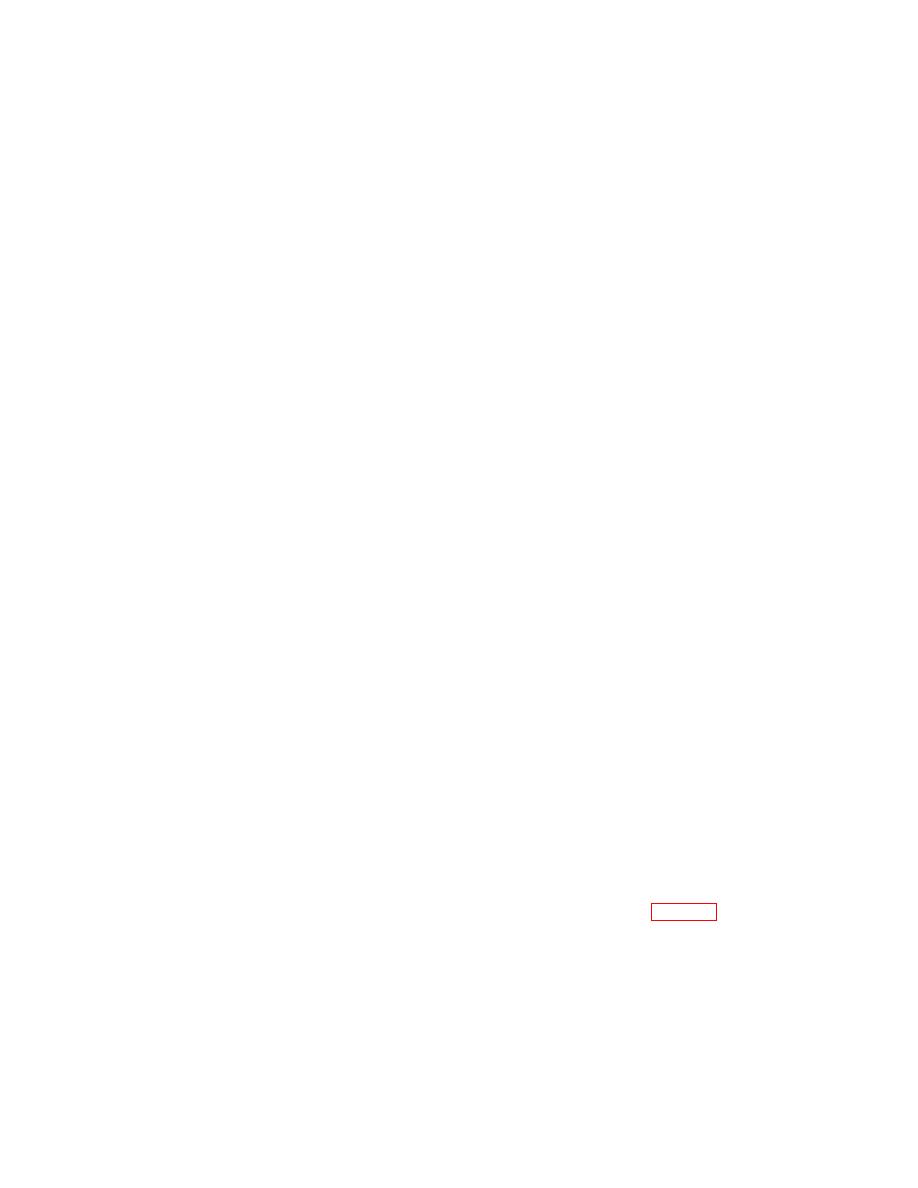
| Tweet |

Custom Search
|
|

|
||
 TM 55-1905-217-34
c. Cleaning, Inspection and Repair.
(1) Wash all of the oil pump parts in solvent (FED SPEC. PD-680), blow dry with compressed air, then
inspect.
(2) If the lip of the oil pump cover oil seal is rough or charred, replace the oil seal.
NOTE
Any time the oil pump drive shaft has been removed from the oil pump body, the
oil seals and seal gasket in the oil pump body must be replaced with new oil seals
and seal gasket.
(3) If the oil pump body and cover bushings are worn excessively or scored, they must be replaced.
Clearance between the shaft and shaft bushings should be between .0016 inch and .0035 inch.
(4) If the rotor bushing is scored or worn excessively, it must be replaced.
(5) Examine the oil pump shaft for wear and scoring where the shaft contacts the bushings and oil seals.
Also examine the serrations on the end of the drive shaft for peening and wear. If the serrations are peened or
worn excessively, or the shaft is scored and cannot be suitably cleaned up with fine emery paper or crocus
cloth, it must be replaced .
(6) The rotor cavity in the pump body must be perfectly smooth for efficient operation. Examine the
cavity for score marks.
(7) The mating faces of the pump body and cover must be perfectly flat so when they are bolted together
they form a tight joint. If the body and cover do not join tightly, leakage is not only apt to occur, but the proper
clearance between the rotors and the body and cover will not be maintained.
(8) Examine the inner and outer rotors. If the rotors are worn or scored excessively, they must be
replaced. The end clearance of the rotors must be replaced. The end clearance of the rotors is the clearance
between the cover face of the body and the rotor set when placed in the rotor pocket and should be between
.0015 inch and .0035 inch. A good straight edge and a .0015 inch feeler blade should be used as a "go" gage
and a .004 inch feeler be used as "no go" gage. Too little end clearance will possibly result in a severe failure
due to the lack of an oil film between the rotor set and the adjacent surfaces. Too great an end clearance will
result in a low flow or weak pump. Housing and rotor faces must be flat and smooth when checking this
clearance.
(9) The tooth clearance between the inner and outer rotors must be less than .008 inch. This clearance
can be measured with standard feeler gages. The clearance between the O.D. of the outer rotor and the.D. of
I
the rotor cavity bushing should be between .004 inch and .008 inch; this clearance is also measured with
standard feeler gages.
(10) The inner and outer rotors are sold in pairs only; therefore, if either rotor is damaged, both rotors
must be replaced.
(11) The flow control valve and pressure relief valve are serviced as an assembly only; therefore, if
either valve is damaged, both must be replaced.
(12) The flow control valve spring should be replaced when a load of less than 16 lbs will compress the
spring to a 1.20 inch dimension.
(13) If the serrations in the drive hubs are peened and worn, or the teeth of the drive coupling are worn
or chipped, replace the drive hubs and coupling.
d. Reassembly.
(1) Pumps are built for right-hand and left- hand rotation depending on the engine model on which they
are used. The direction of rotation is marked on the pump body. The pump body for the left-hand pump, from
outward appearances, is the same as the right-hand pump body. Similarly, the left-hand and right-hand pump
covers appear alike. The difference between the pump bodies as well as the pump covers is in the location of
the oil seal bleed hole which must always be in the intake port. When rebuilding pumps particular attention
should be directed to the location of the bleed hole because its position and the assembled position of the flow
control and relief valve assembly determines the direction of flow through the pump (fig. 3-40).
3-57
|
||
 |
||